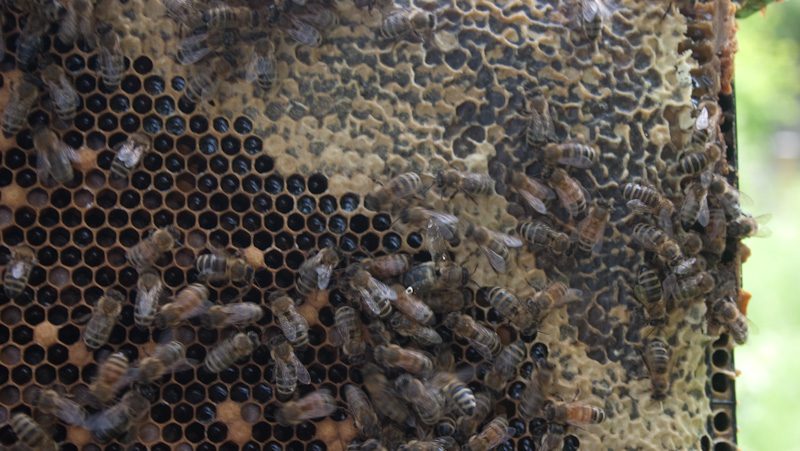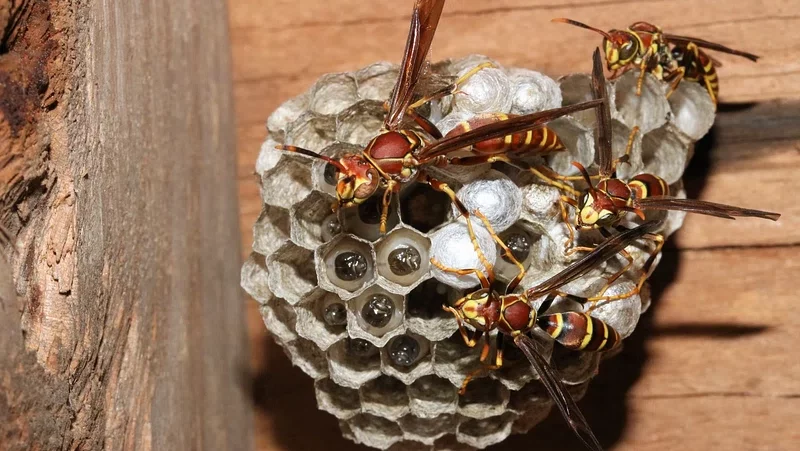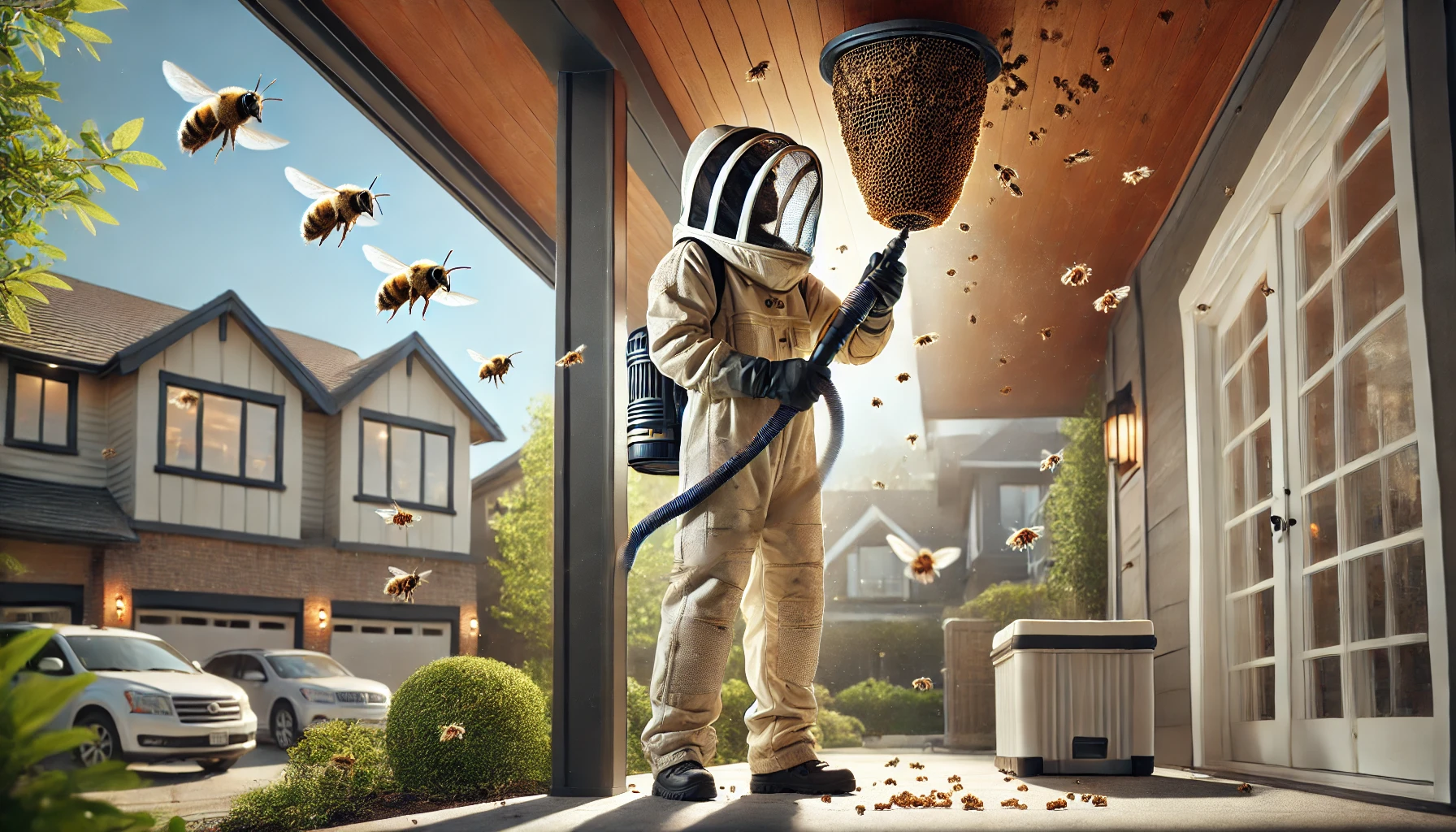Key Takeaways
- Assess the bee hive from a safe distance before taking action.
- Do not spray or knock down a hive, as it can provoke bees.
- Keep children and pets away from the hive to prevent stings.
- Identify the type of insect to determine the best removal method.
- Contact a professional for safe bee relocation or removal.
- Take preventive measures to avoid future bee infestations.
 Finding a bee hive near your home can be a startling experience, especially if you have children or pets. While bees are an essential part of pollination and the environment, a hive in close proximity to your living space can pose risks, particularly to those allergic to bee stings. Handling the situation safely and responsibly is crucial—not only for your family’s well-being but also for protecting these vital pollinators.
Below are step-by-step actions to take when you encounter a bee hive near your home, and what to avoid and when to call a professional.
Finding a bee hive near your home can be a startling experience, especially if you have children or pets. While bees are an essential part of pollination and the environment, a hive in close proximity to your living space can pose risks, particularly to those allergic to bee stings. Handling the situation safely and responsibly is crucial—not only for your family’s well-being but also for protecting these vital pollinators.
Below are step-by-step actions to take when you encounter a bee hive near your home, and what to avoid and when to call a professional.
Step 1: Assess the Situation from a Safe Distance
If you have spotted a bee hive, the first and foremost step is to stay calm, relax yourself, and maintain distance. Bees are generally not aggressive unless they feel threatened. Getting too close or making sudden movements can trigger defensive behavior, leading to stings. How to Assess Safely:- Observe the hive from at least 15 feet away.
- Identify its location—common areas include tree branches, roof eaves, inside walls, or near decks.
- Look at bee activity—are they swarming (a temporary relocation) or nesting (a long-term hive)?
- Avoid loud noises or strong vibrations (like mowing the lawn) near the hive.


Not getting a solution?
Get your free pest control estimate today!Step 2: Do NOT Disturb the Hive
Many homeowners make the mistake of trying to get rid of a bee hive themselves. This is dangerous for several reasons:What NOT to Do When You Find a Bee Hive
DON'TS
-
Do NOT spray insecticides or water on the hive – This can make bees aggressive and may not eliminate the entire colony.
-
Do NOT attempt to knock the hive down – Disrupting the structure can provoke defensive swarming.
-
Do NOT seal off entry points if bees are inside your home’s walls – Trapped bees can find their way inside your house instead!
- Note where the bees are coming and going.
- Keep doors and windows closed near the area.
- Contact a professional bee removal service.
Step 3: Keep Children and Pets Away

Pets & Bees
Dogs and cats are naturally curious and may try to sniff or paw at the hive, resulting in painful stings.
Children & Bees
Kids playing near the hive may accidentally provoke the bees. Ensure they stay indoors or in a safe area until the hive is addressed.Step 4: Determine the Type of Bees
Not all stinging insects are bees! Correct identification can help determine the best course of action.| Type | Appearance | Nest Type | Aggression Level |
|---|---|---|---|
| Honeybees | Fuzzy, golden-brown | Wax-based hive, often in trees or structures | Generally docile unless provoked |
| Bumblebees | Round, fuzzy, black and yellow | Small ground nests or wood cavities | Passive, only sting when threatened |
| Wasps & Hornets | Smooth, slender bodies | Paper nests (gray, papery appearance) | Highly aggressive, especially near nests |
Why This Matters
-
Honeybees and Bumblebees: These essential pollinators should be relocated, not exterminated, to protect their role in the ecosystem.
-
Wasps and Hornets: More aggressive than bees, they may require pest control intervention for safe removal.
-
Correct Identification: Knowing the type of insect helps professionals choose the safest and most effective removal method.

Step 5: Contact a Professional for Safe Removal
If you have confirmed a bee hive near your home, the best course of action is professional removal and relocation. This ensures that the bees are handled safely without harm to you or your property.Step 6: Prevent Future Bee Hives on Your Property
Once the hive is removed, take steps to prevent new colonies from forming.- Seal Openings – Inspect and seal cracks in walls, chimneys, and siding where bees may enter.
- Avoid Attractive Nesting Spots – Remove old tree stumps, unused equipment, and debris where bees might settle.
- Limit Food Sources – Cover trash bins, avoid leaving out sweet foods, and clean up sugary spills outdoors.
- Plant Bee-Friendly Flowers in a Designated Area – If you love bees, provide nectar sources away from your home’s entry points.
What to do if Bee stings you
Despite precautions, bee stings can happen. Here’s what to do:First Aid for Bee Stings
-
Remove the Stinger Immediately – Scrape it out with a credit card; don’t pinch it.
-
Wash the Area – Use soap and water to clean the sting site.
-
Apply a Cold Compress – Reduce swelling and pain with ice or a cold pack.
-
Take an Antihistamine (if needed) – Benadryl or similar medications can reduce itching and swelling.
-
Monitor for Allergic Reactions – Seek immediate medical help if you experience difficulty breathing, swelling of the throat or face, dizziness, or a rapid heartbeat.
 If you feel things have gone out of control, it is advised to contact pest control professionals. Our team can provide a customized approach to protect your home effectively.
Visit our Species, Control, and DIY Guide sections for additional resources on bee and ways to tackle a bee infestation.
If you feel things have gone out of control, it is advised to contact pest control professionals. Our team can provide a customized approach to protect your home effectively.
Visit our Species, Control, and DIY Guide sections for additional resources on bee and ways to tackle a bee infestation.





